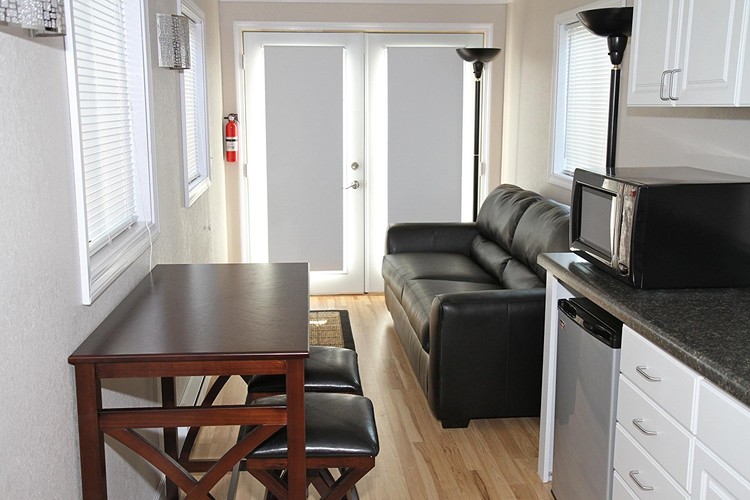
The conversion of shipping containers to living spaces is not a new concept—but being able to purchase them online and have them delivered by e-commerce giant Amazon is. Deliveries by the Seattle-based (and seemingly endlessly expanding) company are becoming a staple for most American households: dogs have never barked so much at the postman, porches have never been so littered with empty boxes, and never before has almost every product on the market been available from one place without even having to leave the house.
In spite of this consumer revolution, homes on demand constitutes new territory for the platform. So what does it look like when an entire house is delivered on the back of a truck?

MODS International, a third party Wisconsin-based seller on Amazon, are now offering fully converted new shipping containers complete with a bedroom, a shower, a toilet, a sink, a small kitchenette and a living space. All that is needed are utility connections and either concrete sonotube footings or a solid concrete slab.
At 320 square feet (29.7 square meters), the tiny home is modest and tightly packed. But with a relatively flexible interior, the design could be customized to suit the needs of the individual. The cost of the home is $36,000 USD with a flat shipping rate of $3754.49 and an expected delivery of 4-6 weeks, making small-space living more accessible than ever.

However, the jury is still out on the success of the container house. Many of the reviewers on the Amazon sale page cite legal issues as a potential deterrent, while others see the potential of the set up as an outhouse or hunting cabin.
The container house offers an alternative, instant and affordable style of living, and an insight into the potential future of architecture. But crucially, it raises the question of accessibility to both housing and design, and the quality of each, particularly in the face of the housing crises facing many major cities. The demands of the populous, and the technology that has emerged to meet those demands, are developing so fast that laws and regulations cannot keep up, allowing these kinds of "rogue" movements to take place. Legal and zoning regulations in many states simply do not allow housing this small to be built—which is why you will see many similarly-sized houses in the US on wheels, and thus legally classified as a "recreational vehicle." Close to 8% of all housing in the United States is mobile (and closer to 20% in states like South Carolina), suggesting that perhaps the addition of a chassis and wheels may start to resolve some of these issues for buyers of MODS International's shipping container model.

However, in cases like this, the question is not can we, but should we? With their method of sale granting them a near-exemption from current regulations, how these housing units are distributed and constructed is left to the discretion of the supplier. And already, a competing seller has offered the same product on Amazon for almost a third of the price—as low as $12,995 + $2000 in shipping—challenging the legitimacy of both offers and perhaps indicating that both the legal complications and the design quality of these homes may be more questionable than they seem.

Questions around sustainability have also been raised. If the containers are new, they are not addressing the problem of excess at shipping yards, and given the structural compromises made by cutting into the containers, they may have little advantage over more traditional materials and processes. Their longevity is also questionable, and perhaps they are in some ways both instant and disposable.
This idea of an "instahouse," sold online and delivered fully built, speaks volumes about the demands of today’s society, and is perhaps indicative of a new direction for architecture. Standardization and accessibility are familiar issues and have been addressed time and time again, yet never with this kind of speed and direct relationship between the consumer and the producer.

This is the true commodification of architecture and only time will tell what the Amazon effect will truly be on housing. But for now, if you want an instant house, get one while they’re hot.
The Pros and Cons of Cargo Container Architecture
Opinion: What's Wrong With Shipping Container Housing? Everything.

